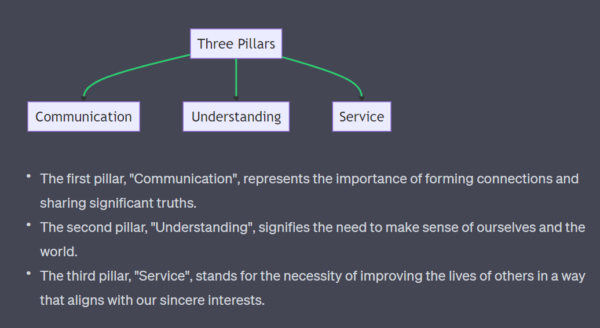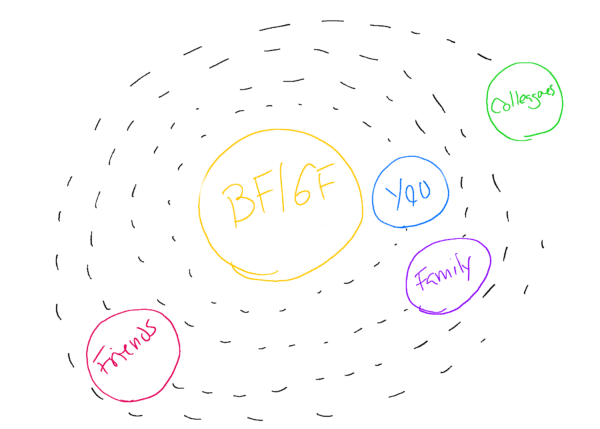This is a complete breakdown of how you should let go of your anger after a breakup.
In this in-depth guide you’ll learn,
- Why a healthy dose of anger can be beneficial
- How to allow anger to motivate you to do something positive
- Why setting a timer is so important
- Why Tom Hanks has it right
- Why you need to gain perspective of what really matters in life
- The importance of embracing the grind
- Why you need to frame anger as a competition
Let’s go!

What Are Your Chances of Getting Your Ex Boyfriend Back?
Take the quizUnderstand That A Healthy Dose Of It Can Be Beneficial
The other day I stumbled across this amazing TED talk given by an anger expert named Ryan Martin.
He argued that anger has many beneficial qualities.
While it’s important not to be controlled by it, it is crucial to understand and integrate it, redirecting it where possible.
This reminded me of Carl Jung’s concept of integrating the shadow.
According to Jung, we have a real self and a shadow self, which represents the hidden and darker aspects of ourselves behind the façade we present to the world.
Jung suggested that a worthy pursuit in life is to integrate the shadow, not by acting out on negative traits, but by acknowledging and constructively incorporating them into our conscious lives. This process leads to becoming a more complete and balanced self, as well as gaining a better understanding of others who are capable of negative actions. It’s about understanding oneself and accepting the darker aspects of the world.
I believe there are parallels between what Ryan Martin discusses in his TED talk about the benefits of anger and Carl Jung’s integration of the shadow. By learning to integrate anger within ourselves, not letting it control us, and understanding it, we can achieve a more complete and balanced life.
And this leads me seamlessly to the next thing I’d like to talk about, redirection.
Allow The Anger To Motivate You To Do Something Productive
Let’s revisit that TED talk by Ryan Martin.
(Here’s the video again if you are too lazy to scroll up.)
In his talk, he emphasized that anger can be seen as a motivator.
Just as thirst motivates you to get a drink of water and hunger motivates you to eat, anger can motivate you to respond to injustice.
This concept revolves around redirection.
Personally, I have found this approach to be effective in my own life.
When I feel angry about something, I have realized that dwelling on it for too long can lead to overwhelming rage and actions that don’t align with the person I want to be.
Instead, I have learned to harness anger as fuel.
Whenever I become upset, I find a positive action I can take in my life and use that anger as motivation.
A great example for me is working out. When I feel really upset, I go to my workout room and start riding my bike. I keep riding until I’m so tired that the anger no longer consumes me. Instead, the workout becomes less about overcoming the anger I’m feeling and more about surviving the ride.
The challenging part is that when you do feel anger, there is a tendency to immerse yourself in it. The last thing you want to do is go for a bike ride or go to work.

What Are Your Chances of Getting Your Ex Boyfriend Back?
Take the quizAnd that’s where the next tip comes into play.
Set A Timer
It may sound cliché, but it’s important to acknowledge and experience our anger without allowing it to consume us and dictate our every decision.
Setting a timer can help with that.
Here’s how it works:
- When someone or something makes you incredibly angry and upset
- Instead of dwelling on it indefinitely
- Take out your phone and set a timer.
- The duration of the timer is up to you—it can be 15 minutes, an hour, or any timeframe you prefer.
- I would suggest starting with a shorter time, such as 15 minutes.
- During those 15 minutes, allow yourself to fully feel everything.
- Let the anger, hatred, and all-consuming rage flow through every fiber of your being until the timer goes off.
- And when it does, it’s time to redirect that anger and use it for something productive.
This approach enables us to integrate our anger by acknowledging and experiencing it, preventing it from bottling up inside. At the same time, it prevents us from dwelling on it, which is a common problem associated with anger.
Understand That Tom Hanks Has It Right
The next point I find quite poignant comes from our friend Tom Hanks.
I mentioned this in an article a few weeks ago, but I find it incredibly meaningful.
A couple of years ago, Tom Hanks was at one of those round tables for actors, where many high-powered actors were present—Jamie Foxx, Robert De Niro, Shia LaBeouf, and others.
The moderator of the table aimed to spark a conversation by asking the actors questions that they would bounce back and forth. One of the questions asked was the typical, ‘What advice would you give your younger self?’ Each actor offered valuable advice, but Tom Hanks’ response was simply perfect.
He said he would sit himself down and tell himself that ‘this too shall pass.’ Whether you feel angry or happy, it will pass.
This perspective is a variation of the idea that time heals all wounds, which I believe is incorrect.
Time doesn’t necessarily heal all wounds, but it teaches you how to live with them.
Taking the long view with anger is crucial, especially during breakups. When consumed by anger, our thoughts often revolve around how the other person wronged us.
This creates a self-perpetuating cycle that prevents us from gaining a broader perspective on our own lives. We start believing things that may not be true—for example, that the pain will last forever or that we’ll always feel this way.
However, if you keep Tom Hanks’ advice in mind, understanding that ‘this too shall pass,’ it allows you to gain some perspective. You may not know exactly when it will pass, but recognizing that it will eventually helps create a sense of perspective.
Gaining Perspective On What Really Matters In Life
Now, staying in line with the idea of perspective, gaining perspective on what truly matters in life is crucial.
If you haven’t heard of the YouTube channel called The School of Life, I highly recommend checking it out. It’s one of the most thought-provoking philosophical channels out there.
About eight years ago, The School of Life released a video titled “The Meaning of Life,” where they explored an honest examination of life’s meaning.
Their argument was simple. Meaning can be found in the pursuit of three activities:
- Communication
- Understanding
- Service.
- Communication involves forming connections and sharing significant truths with others, which is very similar to the relationships aspect of the Holy Trinity concept of relationships.
- Understanding involves making sense of ourselves and the world, emphasizing learning and knowledge. This connects back to our earlier discussion on Carl Jung’s integration of the shadow—the pursuit of understanding is part of the meaning of life.
- Service involves improving the lives of others in a way that aligns with your genuine interests. It can take various forms, such as being a doctor, writer, or filmmaker, bringing joy to others.
Essentially, the School of Life’s video argued that the meaning of life revolves around the pursuit of human flourishing through communication, understanding, and service.
When going through a breakup, people often lose sight of this perspective, believing that their entire life revolves around the ex-partner. We often discuss this with our clients, as many exhibit codependent tendencies.

What Are Your Chances of Getting Your Ex Boyfriend Back?
Take the quizThey become fixated on their ex, neglecting these other vital aspects.
It’s crucial to remember that communication is just one pillar of life, with understanding and service being equally important.
Similar to the synergistic effect of the Holy Trinity concept, these pillars of meaning work together.
While negative impacts on communication can affect understanding and service, the opposite is also true. By focusing on understanding and service, you can positively influence communication.
Embrace The Grind
The sixth aspect is the idea of embracing the grind.
Building on our previous discussion of communication, understanding, and service, I believe that people have become somewhat lazy. I don’t mean to label you as lazy, but I’ve observed a goldfish effect at work.
This effect stems from the rise of social media and the expectation of quick results, resulting in shorter attention spans and diminished patience.
However, accomplishing great things requires embracing the grind.
The grind of life, using our three pillars, entails embracing the process of understanding oneself, finding a worthwhile service, and forming connections with others. Embrace it and acknowledge that it won’t happen overnight.
To illustrate this point, there was recently a viral story on Reddit.
It involved a man who spent 30 years of his life building a tunnel—an incredible achievement.
This tunnel was akin to an ant colony and was solely built by this individual.
It demonstrates the power of grinding, of pushing forward even when motivation wanes. It means working out even when you don’t feel like it, going to work even when you’re reluctant, and accomplishing tasks even when you lack motivation.
By gradually working towards these goals day in and day out, you will eventually look back in 30 years and realize the impressive “tunnel” you have built. Along the way, people will take notice of your achievements.
While we’re discussing the tunnel metaphorically here, you will create accomplishments that attract individuals, leading to greater understanding and meaning in your life.
This is how I strive to live my life, and it’s how I believe you should live yours.
Framing Anger As A Competition (You Vs. Situation)
Consider framing anger as a competition.
This concept comes from one of my favorite motivational speakers, David Goggins.

What Are Your Chances of Getting Your Ex Boyfriend Back?
Take the quizHe suggests framing anger as a battle between you and the situation at hand.
Who will emerge victorious?
Will you allow anger to overpower you, or will you conquer the situation?
Adopting a framing technique can be an incredibly powerful tool if you consistently stick to it.

